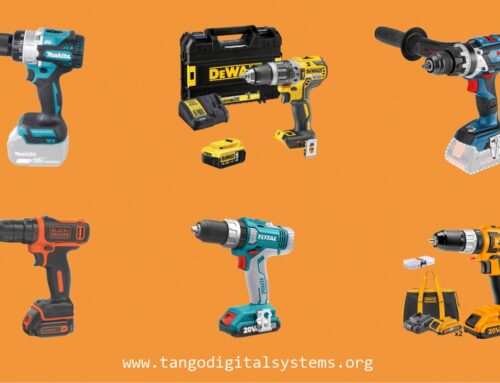20 Mistakes Installers Make When Installing Solar-Inverter Systems (and How to Solve Them)
Solar-inverter systems are transforming energy consumption for homes and businesses, offering sustainable and cost-effective solutions. However, mistakes during installation can undermine their performance, safety, and lifespan. Below are 20 common mistakes installers make and practical solutions to avoid them.
-
Improper Sizing of Solar Panels and Inverters
Mistake: Mismatching the solar panel capacity with the inverter’s rating leads to underperformance or system failure.
Solution: Conduct a detailed energy assessment and use tools like PV sizing calculators to ensure compatibility between the panels and the inverter.
-
Incorrect Battery Sizing
Mistake: Using batteries that are too small or too large for the system can result in inefficiency or unnecessary costs.
Solution: Calculate the battery capacity based on daily energy consumption and backup requirements, factoring in the depth of discharge (DoD) and future scalability.
-
Improper Wiring Connections
Mistake: Loose or incorrect connections can cause energy loss, overheating, or fire hazards.
Solution: Double-check all wiring connections and use labelled cables and diagrams to minimize errors during installation.
-
Poor Site Assessment
Mistake: Ignoring shading issues or unsuitable roof angles reduces system efficiency.
Solution: Use solar analysis tools like Solar Pathfinder or HelioScope to identify optimal locations and angles for installation.
- Neglecting Local Regulations and Permits
Mistake: Installing systems without adhering to local electrical codes can lead to fines or mandatory removal.
Solution: Familiarize yourself with local building codes, electrical standards, and obtain the necessary permits before starting the project.
-
Skipping Over Current Load Analysis
Mistake: Installing a system without understanding the client’s peak load requirements leads to power failures.
Solution: Conduct a load analysis to determine peak demand and design the system accordingly.
-
Poor Cable Management
Mistake: Unorganized or exposed cables are prone to damage and reduce the system’s lifespan.
Solution: Use conduits, cable ties, and labels to ensure cables are neat, protected, and easy to troubleshoot.
-
Incorrect Grounding
Mistake: Failing to properly ground the system can result in safety hazards and reduced equipment lifespan.
Solution: Follow manufacturer guidelines and local electrical codes to ensure proper grounding.
-
Improper Inverter Placement
Mistake: Placing the inverter in areas with poor ventilation or direct sunlight causes overheating.
Solution: Install the inverter in a shaded, well-ventilated location with easy access for maintenance.
-
Overlooking Monitoring Systems
Mistake: Skipping the installation of monitoring systems leaves users unaware of system performance.
Solution: Include a monitoring system like Enphase Enlighten or SolarEdge in every installation to track performance.
-
Ignoring Weatherproofing
Mistake: Exposed components can suffer damage from rain, UV rays, and temperature fluctuations.
Solution: Use weatherproof enclosures, UV-resistant cables, and sealants to protect the system.
-
Undersized Charge Controllers
Mistake: Installing charge controllers that cannot handle the system’s maximum current results in failures.
Solution: Select a charge controller with adequate capacity and safety margins.
-
Improper Mounting Structures
Mistake: Weak or poorly installed mounts can collapse under wind or snow loads.
Solution: Use high-quality, durable mounting structures designed for the site’s weather conditions.
-
Misaligned Solar Panels
Mistake: Incorrect panel orientation reduces energy generation.
Solution: Ensure panels face the correct direction (typically south in the northern hemisphere) and are tilted at the optimal angle.
-
Insufficient Ventilation for Batteries
Mistake: Poor ventilation can cause overheating and reduce battery efficiency.
Solution: Install batteries in a well-ventilated area with adequate spacing between units.
-
Failing to Test the System After Installation
Mistake: Skipping post-installation testing can leave undetected issues.
Solution: Perform thorough commissioning, including checking voltage, current, and overall system performance.
-
Underestimating Maintenance Requirements
Mistake: Failing to educate clients about maintenance leads to system degradation.
Solution: Provide a detailed maintenance plan, including cleaning, inspections, and component replacement schedules.
-
Improper Overcurrent Protection
Mistake: Skipping circuit breakers or fuses increases the risk of electrical faults.
Solution: Install overcurrent protection devices according to system specifications and standards.
-
Failing to Provide User Training
Mistake: Leaving clients without knowledge of how to operate or monitor their system.
Solution: Offer a comprehensive tutorial and user manual tailored to the installed system.
-
Using Low-Quality Components
Mistake: Cheap or counterfeit components compromise system performance and safety.
Solution: Source components from reputable manufacturers and verify certifications before purchase.
Optimizing Solar-Inverter System Installations
By addressing these mistakes, installers can ensure optimal performance, longevity, and client satisfaction. Proper planning, quality components, and attention to detail are crucial for delivering high-performing solar-inverter systems.




Leave A Comment